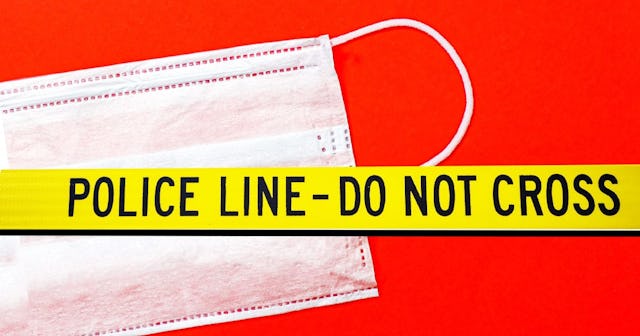It Shouldn’t Take A Pandemic To Prevent School Shootings

March 2020 was the first March since 2002 without a school shooting. The claim made headlines and flooded my social media feeds almost instantly. The information was upsetting—not because even while in the deepest depths of grieving normal, anyone wished for a school shooting—but because it shouldn’t take a pandemic to decrease them.
We shouldn’t give children a reprieve from the fear of being shot at school by replacing it with the fear of catching a deadly virus.
After the claim made headlines across social media, the rebuttals started. And technically, yes, an argument could be made that the headline is untrue. To say March 2020 was the first March without a school shooting since 2002 requires blurring a few details. Many of the shootings used to form that headline don’t quite fit the description of a typical shooting, either because the shooting didn’t include students, or didn’t include the intent to attack. For example, in March 2015, the cited shooting was between two adults on elementary school grounds, and in March 2009, the incident occurred at a bus stop.
However, whether the claim blurs details or not, the important truth remains that school shootings are happening so frequently that we can play games with words to decide what counts as a school shooting or not. That’s a problem.
I remember Columbine. I was in high school when two students walked into their high school in Colorado and killed twelve students and one teacher. Though it wasn’t the first school shooting, the tragedy created the blueprint that too many shooters and would-be shooters would follow and idealize.
I remember the endless fake threats that followed, that led me and my classmates to sit outside on the field behind the school, our knees drawn to our chests as we waited for the police to check the building. I remember being sure what happened in Columbine couldn’t happen in my school, and yet, being unable to suppress the spike of fear as police officers walked through the doors I’d walked through thousands of times before.
Tai’s Captures/Unsplash
I couldn’t have imagined that the same spike of fear I felt watching the Columbine students exit their school, with their hands behind their heads, would be inherited by my children, twenty years later, and that school would no longer be a safe space for millions of kids. I couldn’t have imagined that one day, as an adult, I’d hesitate before sending my kids to preschool because a shooter had opened fire in an elementary school, or that active shooter drills in schools would be as commonplace and necessary as fire drills.
And I absolutely could not have imagined that a pandemic would do more to prevent school shootings than our government, than the people who presumably took a job in public service in order to service the public — to protect the most vulnerable among us, our children.
The response to school shootings often feels not only woefully underwhelming, but also scripted. The pattern is predictable. First the horror and outrage spike, then the tweets laden with thoughts and prayers, then the debate over guns and mental health access, and then…nothing. We—America—wait until the next tragedy, and send more thoughts and prayers, and stand across party lines debating gun rights, while kids go to school surrounded by the gut wrenching truth that no community and no school is safe. And with each passing day, school shootings become so commonplace, they’re almost…absurdly, grotesquely…normal.
After decades of school shootings, we’ve learned to react to the problem. We’ve found ways to attempt to protect our children—bulletproof backpacks and active shooter drills. But we’ve never managed to address the root of the problem on a national level—too many guns in too many hands with not enough control.
So now what? The number of school shootings is down because schools are closed, but eventually, schools will re-open. We will go back to some version of normal, and that version of normal is going to include more guns. Gun sales spiked in March as the serious implications—both to public health and to the economy—of the pandemic became clear.
We don’t know what kind of world we’ll return to, but we know it’ll be one in which more guns exist in more people’s hands. It would be irresponsible to assume school shootings will become a thing of the past simply because for a time they were on pause—along with everything else.
Do we cross our fingers and close our eyes and hope the post-pandemic world is one in which school shootings have been left in the past?
I’m all for hope—dare I say it’s even the brand I’ve chosen to carve my name under—but when it comes to gun violence and my children, hoping school shootings stop when schools reopen isn’t enough.
Do we allow our children back to school, replace the new fear for the original fear, and wait for the next tragedy? Do we go back to our normal?
No one knows what life will look like when the pandemic is relegated to memories long gone. We all can agree that, most likely, there will be permanent changes to the way we live, work, and socialize. Normal will look different. The pandemic has taught us the country is capable of sweeping changes within days. We’ve been forced to see how interconnected we are and how much we each rely on each other and our institutions to keep us safe.
And as normal changes, it’s time to take the steps to change this normal, too. Because school shootings should never have become “normal” in the first place.
This article was originally published on